One of my good SBM Army members suggested that I compile a list of “triathlon vocabulary” and post it.
I already had a big list in the book, but I thought I’d repost and add something here. Hope it helps! (And feel free to tell me what I missed so I can add to the list! After a while, making your own dictionary causes your brain to explode!)
Types of TriathlonsThe following table shows types and approximate distances of triathlon events. Individual races may vary slightly in distance, but the distance for each race is more-or-less as follows. |
|||
| Type | Swim Distance | Bike Distance | Run Distance |
| Indoor Triathlon /Super Sprint |
200 yard pool / lake swim |
30 minute stationary / road bike | 20-30 minute treadmill / road run |
| Sprint | 400-800 yards/meters | 12-18 miles |
3.1 miles (5k) |
|
Olympic / International / Short Course |
0.9 miles | 25 miles |
6.2 miles (10k) |
| 70.3 Half-Ironman | 1.2 miles | 56 Miles | 13.1Half Marathon |
|
ITU / Long Distance |
2.5 miles (4k) |
74 miles (120k) |
18.6 miles (30k) |
| 140.6 Ironman | 2.4 miles | 112 Miles | 26.2 Marathon |
How to Speak Triathlon
25 meter pool – 64 lengths equal one mile. (A length is one way down the pool; a “lap” is down and back.)
25 yard pool – 70 lengths equal one mile. (A length is one way down the pool; a “lap” is down and back.)
“100” – If your workout plan says to swim “100” – this means you go down the pool to the wall and back, then you do it again. 25 meters/yards + 25 meters/yards + 25 meters/yards + 25 meters/yards = 100 meters yards.
400 meter track – A track that is regulation will be 400 meters for one lap; four times around will equal 1 mile.
2 a days – means working out twice a day.
Aerobic – “Used to refer to running or other exercise at an intensity that’s sufficiently easy for your respiratory and cardiovascular systems to deliver all or most of the oxygen required by your muscles, and slow enough that lactic acid doesn’t appreciably build up in your muscles. Generally, you can sustain a slow aerobic pace for long periods of time, provided you have the endurance to go long distances.”[i]
Aero Bars – Because it is more comfortable and more aerodynamic for triathlon racing, most triathlon bikes are equipped with these type of bars, which attach to the handlebars or stem of a bicycle and allow you to ride in the aero position. These can also be placed on a road bike. (from TriFuel.com)
Aero Bottle – a water bottle or hydration system that is hooked to the aero bars instead of the down tube. Easier to take in calories and hydration while remaining in the aero position.
Aero Position – This is the position that triathletes are often seen riding on their bikes. The use of aero bars (installed on a road bike, or included on a triathlon bike) allows the rider to rest her forearms on pads on the handlebars, to assume a more aerodynamic position, which helps with drag, but also conserving energy.
Aid Station: Typically every 1 mile to 1K on the run and every 10-20 miles on the bike, there will be an aid station with gels and water. Plan for these when packing your race fuel and hydration. (from TriFuel.com)
Age Group / Age Grouper – Divisions in triathlon races. Usually, the divisions are divided into gender and age. For example, Female 35-40. There are other optional divisions such as “Athena” and “Clydesdales”
Anaerobic Exercise– Usually a short burst of exertion. “Used to refer to running or other exercise at an intensity that makes it impossible for your respiratory and cardiovascular systems to deliver all or most of the oxygen required by your muscles, and fast enough that lactic acid begins to build up in your muscles, thus producing a tired, heavy feeling. The pace associated with anaerobic running cannot be sustained very long.”[ii] The first phase of exercise, where the glycogen or sugar is consumed without oxygen-a far less efficient process. Examples of anaerobic exercise include weight lifting, sprinting, and jumping. (from BeginnerTriathlete.com)
Anaerobic threshold (AT) – Also known as “lactate threshold”; the transition phase between aerobic and anaerobic running. Good training will increase AT by teaching the muscles to use oxygen more efficiently, so that less lactic acid is produced. Also known as “lactate threshold.”[iii]
Anti-Fog – solutions you can buy (or have lying around, like baby shampoo!) to apply to goggles to prevent the dreaded foggy lens
AquaBike – A race that leaves out the run. You swim and bike only.
Adventure Racing (AR) – type of racing that may involve all sorts of crazy things—- mud runs, fire pits, or kayaks and canoes
Annual Training Plan (ATP) – a written program or plan that focuses an athlete’s training during the course of a year. The purpose is “periodization” -dividing the plan and training into phases to achieve the maximum results / goals.
Athena Division – An optional female division to enter in some races. Instead of entering into the Age Group, a female can choose “Athena,” which is women who are 165 pounds and over, according to the USAT. Before 2013, this weight was 150.
Basal Metabolic Rate –is the amount of energy expended daily by humans and other animals at rest. Rest is defined as existing in a neutrally temperate environment while in the post-absorptive state. (Wiki) The amount of energy expended while at rest in a neutrally temperate environment, in the post-absorptive state (meaning that the digestive system is inactive, which requires about twelve hours of fasting in humans). (BeginnerTriathlete.com)
Base – the aerobic foundation you build to ensure that you can begin to add speed, power and longer endurance. Without a good “base,” longer distance triathlon is impossible (or really, really ugly).
Beach Start – when the swim portion of a race begins on a beach. Usually you run across the sand and enter the water after the buzzer sounds.
Big Gear – the large gear on your bike (which should NOT be used when climbing); allows you to go faster on flat land or downhill, where you are putting out more power at the same cadence.
Bike In – Coming off the bike leg of the triathlon, there is typically an arch, gate or area into which you push your bike. (from TriFuel.com)
Bike Out – When you head out on the bike leg of the triathlon, there is typically an arch, gate or area out of which you push your bike. (from TriFuel.com)
Bike Porn – photos our colleagues and teammates share of their brand new bikes so that we may covet them. (from BeginnerTriathlete.com)
Bike Shoes – shoes that are worn on the bike with a stiff (sometimes carbon) sole that attaches to the bike with cleats and clipless pedals. The point of these shoes is to allow the rider to utilize the entire pedal stroke without losing power.
Blood Lactate Testing (BLT) – measures the concentration of lactate in your blood to accurately determine your Lactate or Anaerobic Threshold.
Body Marking – In a race, you will be required to wear your race number on your body, often on the upper arm, lower leg and sometimes the thigh. Before a race, there will be designated “Body Markers,” volunteers who write your race number on your body with either a permanent marker, or applying a temporary tattoo peel-off number.
Bonk – Also, known as “hitting the wall.” The dreaded point (and awful feeling similar to what your body would feel like if you ran into a wall) during a race when your muscle glycogen stores become depleted and a feeling of fatigue engulfs you.[iv]
BOPer – someone frequently races (or finishes) in the Back of the Pack
BOSU® Ball – This is a half ball and half platform training tool. Originally the name “BOSU” was an acronym for “Both Sides Up.” It meant that the BOSU® Balance Trainer could be used on either side, the dome or the platform. This little jewel will rock your strength and core training. [www.Bosu.com]
Bottle Cage – The rack installed on your bike to hold your water bottle.
Brick – back-to-back workouts of the sports. Traditionally, a bike and run, smushed together like on race day. But it can really be any combination of swim, bike and run. Bike/Run, or Swim/Bike or Swim/Run.
Buoy – blow-up / floating markers that are used to designate the proper swim course during a race. Different color buoys usually designate turns. You can also use a “buoy” (a/k/a a “pull float” in your swimming drills between your knees/thighs to simulate a wetsuit swim)
Cadence – Also, known as RPM, or revolutions per minute, cadence means the rhythm of your swim stroke, bike pedal stroke, or run turnover of the feet (as they hit the ground), which is usually measured in “revolutions” per minute.[v] According to Train Like a Mother, the book, experts recommend about 180 steps per minute. I hope. Someday.[vi]
Century – a 100 mile bike ride.
Century, Metric – a 65 mile bike ride
Chain Suck – The chain fails to disengage from the bottom teeth of a front chain ring; instead the teeth snag the chain and carry it up and around the rear circumference of the ring, winding it back onto itself, and jamming it between the chain-rings and chain-stay (from BeginnerTriathlete.com)
Check-in – Before a larger sized race, the race may require you to check-in yourself and/or your bike. Read the rules of each race carefully so you will know.
Circle Swimming – when you must share a lane in the pool, some people like to circle swim. This is sometimes efficient, sometimes not. Ask your lane-mate what they prefer. Don’t just start swimming in circles.
Cleat – The part on the bottom of the cycling shoe where your shoe attaches to your clipless pedals.
Clipless Pedals – Pedals installed on your bike that allow you to “clip in” your shoes. These help your feet remain attached to the bike so you can use a full revolution in your pedaling.
Clydesdale – The boy version of the Athenas – male racers weighing over 220 pounds. This was upped from 200 in 2013.
Criterium (Crit) – a typically short course bike race that is often in laps/circles. Many are held in town centers, as is my favorite, the Athens Twilight Criterium in April in Athens, GA.
Cooldown (CD)– time at the end of the workout to bring the heartrate down and to focus on the recovery.
CO2Cartridge – Sold at bike stores, these are essentials for your bike bag for inflating a tube with a touch of a button.
Deca -10x Iron distance. (24mi/38km swim, 1120mi/1800km bike, 262mi/422km run). There are also 2x. 3x, 4x, 5x, 15x, and 20x distances that have been raced. (from BeginnerTriathlete.com)
Derailleur – A system on a mountain bike, road bike or triathlon bike made of up sprockets and a chain with a method to move the chain from one to the other – this causes the shifting of gears.
Disc Wheel – a solid wheel on the bike that is more aerodynamic
DFL – Acronym for “Dead effing Last”
DNF – Acronym for “Did Not Finish” (the race).
DNS – Acronym for “Did Not Start” (the race).
Dolphin Dive – a way to enter the water in a swim start where the water is shallow. Check it out here. The Expert is now an expert at this.
Dolphin Kick – in the swim, using your legs in a together-kick, while swimming.
DQ – Acronym for being disqualified from a race.
Drafting – Most commonly a term used in cycling, drafting entails riding close behind the rider ahead of you in order to avoid wind drag and assist in decreasing your effort. Drafting, for the most part, is legal in the sport of cycling, but illegal in triathlon.
Draft Zone – according to USAT this is: “a rectangular area seven meters long and two meters wide surrounding each bicycle. The longer sides of the zone begin at the leading edge of the front wheel and run backward parallel to the bicycle; the front wheel divides the short side of the zone into two equal parts.”
Duathlon – A race consisting of run and bike and run again.
Electrolytes – Electrolytes are nutrients in the body which are critical for organ functioning. These nutrients include: sodium, potassium, chloride, calcium, and phosphate. (from TotalTriathlon.com)
Expert – someone who knows what they are talking about. Or Swim Bike Mom’s husband—better known as “The Expert”
Expo – a place pre-race (usually at registration) where race sponsors will gather with their “wares” and take all your money on the discounted, awesome new things like race t-shirts and finishers jackets.
Fartlek – Another name for interval training which creates a mixture of slow running, running at a moderate pace, and short, fast bursts. Fartlek training is a “creative way” to increase speed and endurance.[vii]
Floating Start – when the start of the race has you treading water
Foam Roller – A training tool made out of cylindrical foam that helps release “trigger points” in the muscles.
FOPer – Front of the packer
Foot Strike – How your foot makes contact with the ground when walking or running; two types of strikes include midfoot and heel. With the midfoot strike, your foot makes contact in the middle portion of the foot, whereas a heel strike makes contact with the heel first. The jury is still out on the benefits of each, though the midfoot strike appears to be winning in the race to proper running form.
Fred – Someone who has all the newest and fanciest triathlon gear, but has no idea how to use it. “Look at the Fred, falling off his $4,000 bike.” Get good gear, but be wary of looking like Fred.
Freestyle – also known as the “front crawl,” this is the most efficient form of swimming in a triathlon.
Gears – You may not know what these are now, but you will.
Gels – A form of sports nutrition typically used by triathletes in races due to the ease of digestibility, quick energy and convenience. Makers of gels include GU, Clif® and Hammer Nutrition®.
Gloves – Gloves are used in cycling to protect the hands in the event of crash. They also provide padding and comfort on the bike.
Goggles – Protective eyewear for the swim, not to be confused with “Googles.”
Half-Ironman® – A triathlon event consisting of a 1.2 mile swim, a 56 mile bike and a 13.1mile half-marathon run (total of 70.3 miles). Note: that “Ironman®”[viii] is a registered trademark of the World Triathlon Corporation and while some races may consist of the “half Ironman®” distance of 70.3 miles, there is only one official Ironman® brand, and as such only races sanctioned and hosted by Ironman® are “half Ironmans®.”
Half-marathon – A race consisting of a 13.1 run.
Half-Mary – nickname for a half-marathon.
Hill Repeats – Just as it sounds. Running or riding up hills and down hills, and then turning around and doing it again.
Holding the Line – Imagine when you are pedaling on your bike that you are following a solid line. Holding your line is necessary for group rides and general bike safety.
Hyponatremia- Hyponatremia is a condition in which there is an electrolyte imbalance in the body. Sodium levels in the blood stream can severely drop to when athletes drink excessive water amounts after prolonged physical activity. (from TotalTriathlon.com)
Indoor Trainer – A contraption that allows you to ride your bike indoors, essentially transforming it into a stationary bike. But much harder and more evil.
Intervals – Training using short, fast “repeats” or “repetitions”…interval training builds speed and endurance. [ix] Another term for “pure misery.”
Ironman® – A triathlon event consisting of a 2.4 mile swim, a 112 mile bike, and a 26.2 mile marathon run (total of 140.6 miles).[x] See, Half Ironman® for disclaimers.
IT Band – The IT band stands for the iliotibial band, which is a tissue (“band” of tissue) that runs along the outside of the thigh, over the hip, down the knee and below the knee. The IT band keeps the knee stable during walking and running. The only thing to help the IT band when it starts to act up is to exert pain on the IT band: to roll on a foam roller, to get a deep tissue massage, to embark on ART (Active Release Therapy), to roll on a lacrosse, tennis, baseball, Trigger Point Ball, or do whatever you can to punish and work that IT band loose.
Kickboard – A flat rectangular piece of Styrofoam used to isolate leg muscles in kick sets.[xi]
Lactate Threshold – See, Anaerobic Threshold.
Ladder – an interval workout with progressively increasing then decreasing distances at each interval. For example, run fast for 400m, jog for 200m, run for 800m, jog for 200m, run for 1200m, jog for 200m, run for 800m, jog for 200m, run for 400m, jog for 200m. (BeginnerTriathlete.com)
Lane – Place in the pool where a swimmer swims; if you pick a lane, by all means, stay in it. Learn how to share.
Lap – Distance from one end of the pool to the other end…and back.
Length – Distance from one end of the pool to the other.
Long Course Triathlon – See, Half-Ironman®.
Long Slow Distance (LSD) – used to describe a long run, or other Zone 2 type training—longer and slower to achieve that base building.
Lube – Can be used to keep your chain on your bike greased; other types of lube include Aquaphor®, BodyGlide®, and Hoo Ha Ride GlideTM, and those lubes can be used under your arms, under the bra strap(s), between the knees and anywhere else you might experience chafing. On the bike, make sure you lube your chain…and the Queen.
Marathon – A running race consisting of 26.2 miles.
Mary – nickname for a marathon
Marshall – one or several individuals are on the course, ensuring that the rules are followed, and flashing penalty cards at individuals who do not follow the rules. On the bike course, they are usually on scooters or motorcycles. These vehicles are legally permitted to be on the race course and are there for your safety. (from TriFuel.com)
Mash – To push a higher gear while riding on a bike.[xii]
Maximum Heart Rate (MHR)- is 80-90 percent of your lactate threshold. Lactate threshold is determined by a test called Blood Lactate Testing (BLT) and is the most accurate way to determine your specific heart rate zones. If all else fails, you can broadly estimate your max HR: using 220 minus your age for your maximum heart rate.
Mdot- the trademarked logo of Ironman.
Monster – something scary; Or SBM’s original and awesome coach, Coach Monster.
MOP – An acronym used to designate someone who tends to swim, bike, run and finish in the “middle of the pack” during a race.
Mountain Bike – A bike designed to be used “off-road” on surfaces like trails and in the woods. Typically, these bikes are heavier than road bikes and made to withstand the rough terrain of an off-road trail. While a sprint triathlon may be finished using a mountain bike, a road bike or triathlon bike should be considered on Santa’s list ASAP.
Mountain Goat – someone who is extremely proficient in trail running; Or SBM’s good friend, Mountain Goat, who is RIDICULOUSLY good at running.
Negative Split – to go faster in the second half of a race/workout.
Off Road Triathlon – Usually a swim, mountain bike and trail run race, as opposed to a swim, road bike and road run race.
Olympic Distance (Oly) – May also be known as an “Intermediate Distance” or a “Short Course Triathlon” and usually a race of a 0.9 mile swim, 26 mile bike, and 10k (6.2 mile run).
“On Your Left” – The safety phrase to alert someone on your right that you are coming up on the left and passing them…on the left.
Open Water Swim (OWS) – swimming in a natural body of water (lake, river, ocean, bay)
Overpronation – Is an excessive inward rolling of the feet.[xiii]
Paddles – These paddles make you look like a frog in the water and are worn on your hands to help build your stroke strength.
Penalty – During a race, if you are caught illegally drafting, littering, cutting the course, passing on the wrong side of the road, or committing any other activity that has been banned by the race director or officiating body, you will serve a penalty, which is typically A) stopping your bike, waiting, and then starting again; B) stopping for 2-5 minutes in a penalty tent; or C) having time added to your finishing time. (from TriFuel.com)
Penalty Tent – Also known as the “Sin Bin”, these are commonly seen in Half-Ironman and Ironman events, and are where you must stop to complete several minutes of penalty time if you are caught drafting, littering or other against-the-rule thing. (from TriFuel.com)
Periodization – method of training where you train in cycles to avoid injury and overtraining and help growth. See ATP.
Plank – An abdominal move for strengthening the core, looks like the start of a push-up position, only resting on forearms and elbows, and holding the position for periods of time; builds endurance in the abdominals and back, as well as the core stabilizer muscles.[xiv]
Podium – the first 3 competitors in each age group. I “podium’d”. Yeah!
PR – Acronym for “personal record.”
Pronation- when a person places more of their body weight on the inside part of the foot when walking/running. (from TotalTriathlon.com)
Pull Float – A floatation device used between the knees while swimming, which aids in keeping the bottom half of your body up in the water and allowing you to concentrate on your stroke.
Puncture – A flat tube.
Queen – Swim Bike Mom lingo for your bottom-half lady parts.
Race Number Belt – A belt where you can attach your race number. This is helpful for putting on your number after the swim. You clip the belt around your waist with your number to the back (on the bike), and then when you run, you rotate your number to the front. You do not swim in your race number.
Race Packet – this is what you pick-up at race registration. Typically an envelope with your race number, timing chip, number stickers and other goodies for your race day.
Race Report – a blog post where you write about your awesome race experience and memorialize it for all those who come after you —for them to read and fear the race before they tackle it.
Racing Flats – lighter and “faster” running shoes to be used in races only.
Refueling – The term used for your first food, meal or sustenance after a workout. This is a valuable time and important time for good nutrition. See, Nutrition, Part I, Chapter 11.
RICE – way to care for a typical sudden injury: rest, ice, compression, elevation
Rim – On a bike, the rim is the outside of the bike wheel that holds the tire in place.
Road Bike – A bike made for travelling on paved roads; they are lighter than cruising or mountain bikes and have many gears with which to confuse you. Typically the road bike will have the skinny, high-pressurized tires for a smoother ride.
Road Rash – Road Rash is slang term for the scrapes and abrasions resulting from your sweet lady skin hitting the hard, evil pavement.
RPM – See, Cadence.
Saddle Sores – Ride too far, too early and without lube and your rear end will learn about these.
Spinning and Spinning® – To pedal at a relatively easy, but high cadence; also, short for indoor cycling classes, but SPIN®, Spinner®, Spinning® and the Spinning® logo are all registered trademarks owned by Mad Dogg Athletics, Inc.
Split – Typically used to describe the time it takes you to do a sport in the race. For example, the “bike split” would be your time from the start of the bike portion of the race, to the time you enter T2.
Sprint Triathlon – A short distance triathlon usually consisting of approximately a ¼ mile swim, 15 mile bike ride, and 5k (3.1 mile) run.
Strike – see, Foot Strike.
Stripper – not what you might initially think. More like a volunteer at a race who helps “strip” your wetsuit off your body after the swim portion.
Supination – when a person places more of their body weight on the outside part of the foot when walking/running. (from TotalTriathlon.com)
Sweet Red – a delicious variety of wine; Or SBM’s best friend, Ansley, who runs Swim Bike Sell.
Swim Sets – The way a swim workout is written.
Swim Wave – Most races divide the start of the event into “waves.” That means that groups start at different times, thus keeping the crowding on the swim down, but also on the entire course. In larger longer-distances races, such as Ironman® races, sometimes there is only one swim wave.
T1 – see, Transition.
T2 – see, Transition.
T3 – Fooled you. There is no such thing. Well, not really. I consider T3 the time after the race when I can finally have a beer and take a shower.
Taco – a bent wheel, that looks like, well, a taco (from BeginnerTriathlete.com)
Taper – The period of time before a race where you slow down the frequency and intensity of the workouts in order to give your body time to recover and rest before the event. The taper will make you crazy.
T-Bone – a delicious variety of steak; or SBM’s coach, Brett Daniels, a/k/a Coach T-Bone
Timing Chip – Usually handed out in race packets, these may be worn on your shoes (running race) or on an ankle strap (triathlon). When you pass over certain points during a race, the timing chip registers your time for the official race results.
Timing Mat– electronic / plastic / rubber mats placed along a race course (and transition) to register the timing chip on your body – to register your swim, bike, run and transition times.
Tire Lever – Small, plastic tool for your bike bag. The tire lever helps you remove the flat tire tube from the rim of the wheel.
Toe Clips – The in-between regular bike pedals and clipless pedals. You can ride your bike with sneakers and clip your toes into these plastic clips installed on your pedals to give you the benefit of a full revolution on the bike without the beginner scariness of the Clipless Pedals.
Trainer – See, Indoor Trainer.
Transition – Two time periods within a triathlon. T1 is the period of time between the swim and bike; T2 is the period of time between the bike and the run. Frequently, in triathlon you will feel “lost” in transition, wandering about, clueless. Transition is also the physical place in the race where you will transition from one sport to another, usually marked by bike racks and Porta-Potties. Race directors will label the area where the bikes are racked as “transition.”
Transition Bags – In many events, you’ll be given separate bags in which you place things like running shoes, wetsuit and goggles, or special needs. Be sure to pay attention to what goes where! (from TriFuel.com)
Triathlete – One who competes in a triathlon, also known as YOU.
Triathlon Bike – A type of road bike that is specifically and ergonomically designed to keep the rider in a more streamlined and aerodynamic position. A tri bike is not usually the first stop in a bike purchase. Often triathletes will start with a road bike and purchase a tri bike as a second bike.
Triathlon Widow – A term coined by the Wall Street Journal, meaning the spouse of the triathlete, who often finds himself/herself abandoned in the early morning by the spouse who is swimming, biking or running.
Tri Kit – A matching top and bottom often worn during a race. The material is meant to wear from start to finish, during the swim, bike and run, and if necessary, under the wetsuit. The tri bottoms will have a small chamois pad, which should be tried ahead of time, especially if you are accustomed to wearing a thick chamois pad for cycling.
Tube – On a bike, the tube is the inflatable part inside of the tire. You remove the tube, not the tire, when you have a flat.
USAT – USA Triathlon (USAT) is “the sanctioning authority for more than 3,500 diverse events, ranging from grassroots to high-profile races nationwide. The organization works to create interest and participation in a variety of programs, including camps, clinics, races and educational opportunities. USA Triathlon’s 140,000-strong membership is comprised of athletes of all ages, coaches, officials, parents and fans striving to strengthen multisport.” For most larger/national races, you will need either a temporary USAT membership pass for the day ($10-20), or a yearly membership. (www.usatriathlon.org)
V02 Max – The highest rate at which oxygen can be taken up and utilized during exercise by a person. (from BeginnerTriathlete.com)
Wave – See, Swim Wave.
Washing Machine – refers to the swim starts in some races, where the water is so choppy that it feels like the swimmers are in a “washing machine.” See Ironman.
Wetsuit – Neoprene suit worn during open-water swim training and races. The neoprene suit is to protect against cold water, but also to provide buoyancy. You either love or hate your wetsuit.
Wetsuit “Legal” – a triathlon where the water is cold enough to wear a wetsuit, as often set forth in the USAT rules.
Wicking Material – Usually a material made of a poly blend fabric that does not absorb sweat (like cotton), but rather shifts it away from the skin.
Warm-up (WU) – period before a race or workout where you get the blood flowing by using dynamic stretches or walking to prepare your body for the effort ahead.
[i] http://www.runnersworld.com/article/0,7120,s6-238-267–439-0,00.html
[ii] http://www.runnersworld.com/article/0,7120,s6-238-267–439-0,00.html
[iii] http://www.runnersworld.com/article/0,7120,s6-238-267–439-0,00.html
[iv] http://www.runnersworld.com/article/0,7120,s6-238-267–439-0,00.html
[v] Your First Triathlon, Joe Friel, p. 179
[vi] Train like a Mother, Dimity McDowell and Sarah Bowen Shea
[vii] http://www.runnersworld.com/article/0,7120,s6-238-267–439-0,00.html
[viii] http://www.ironman.com
[ix] http://www.runnersworld.com/article/0,7120,s6-238-267–439-0,00.html
[x] http://www.thefreedictionary.com/triathlon
[xi] http://www.staps.uhp-nancy.fr/foad_natation/swimterms.htm
[xii] Your First Triathlon, Joe Friel, p. 180
[xiii] http://www.runnersworld.com/article/0,7120,s6-240-319-327-425-0,00.html
[xiv] http://exercise.about.com/od/abs/ss/abexercises_10.htm

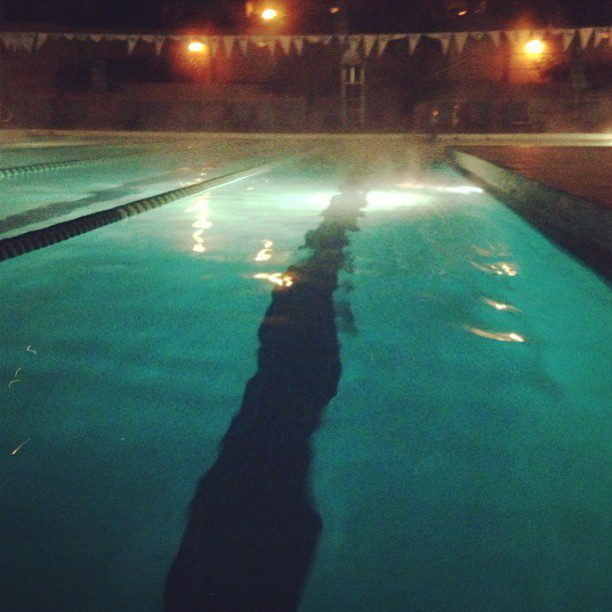
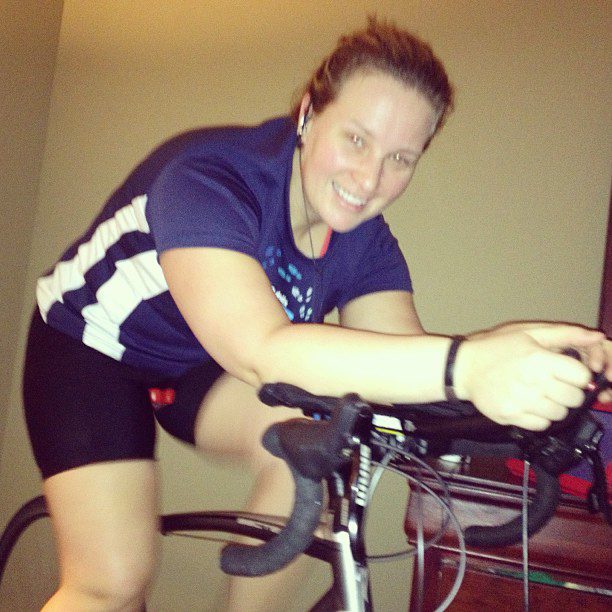
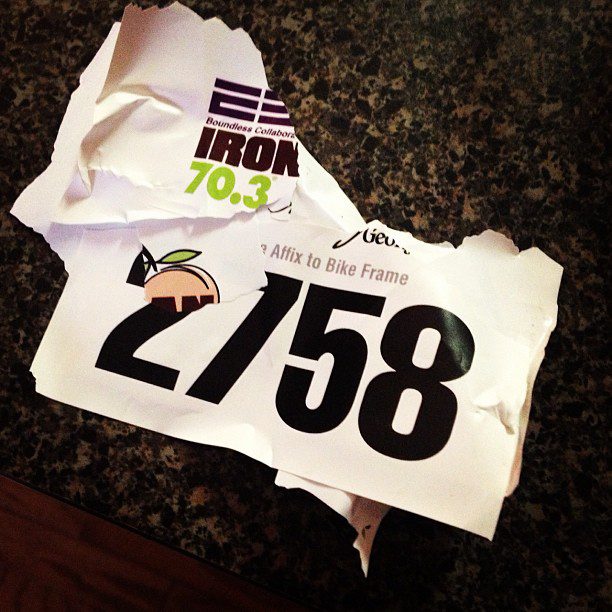
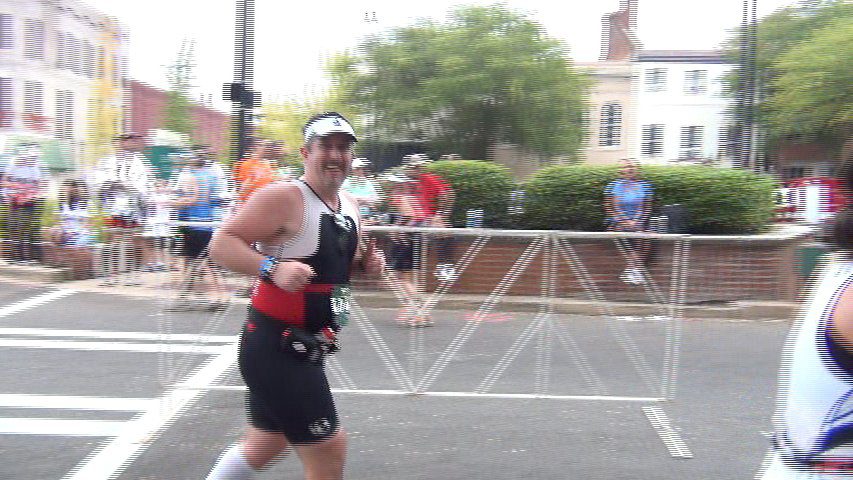
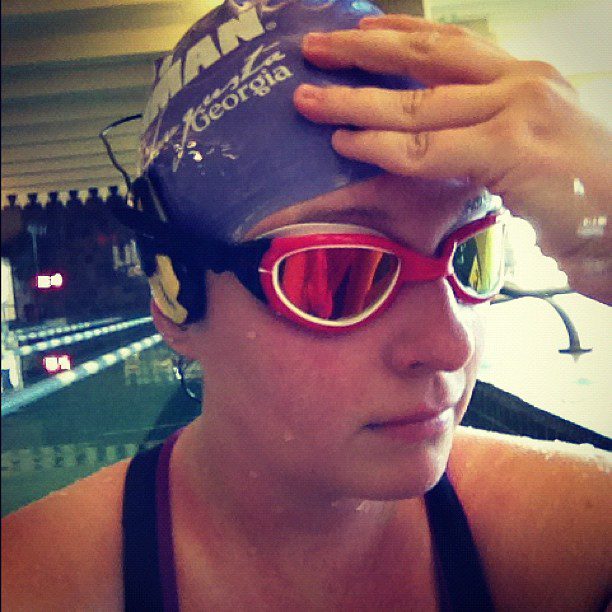
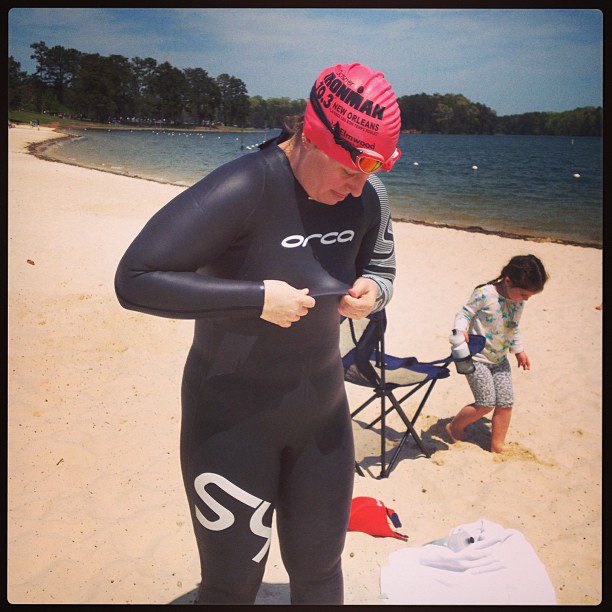

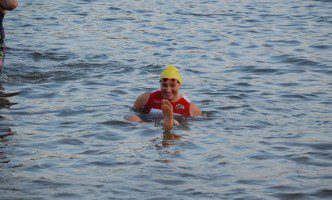
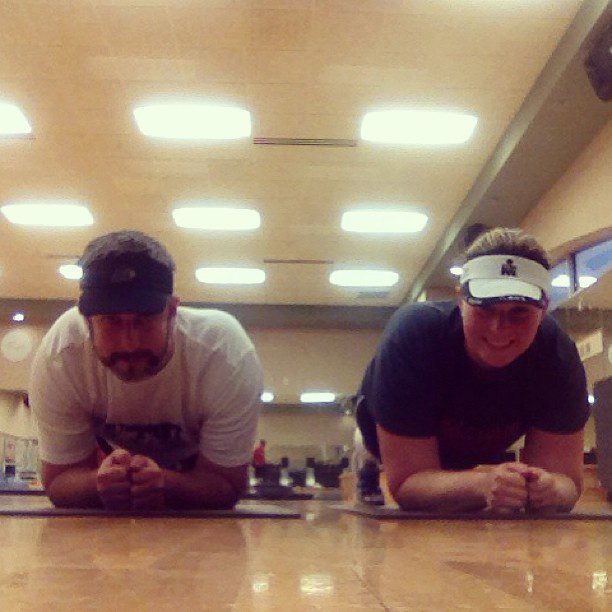
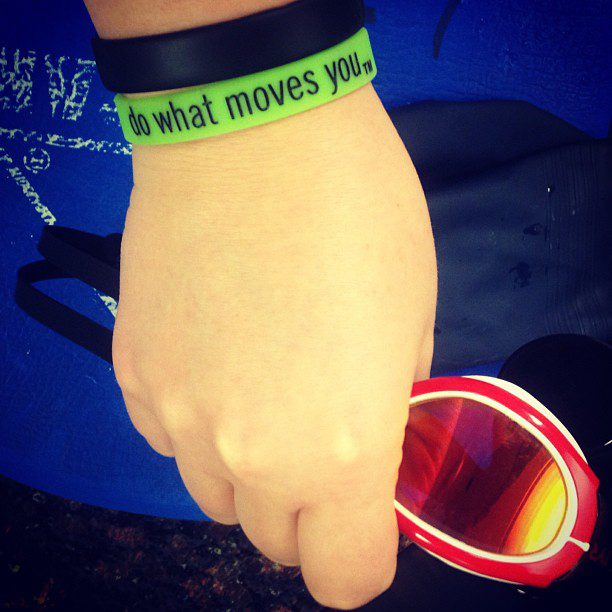
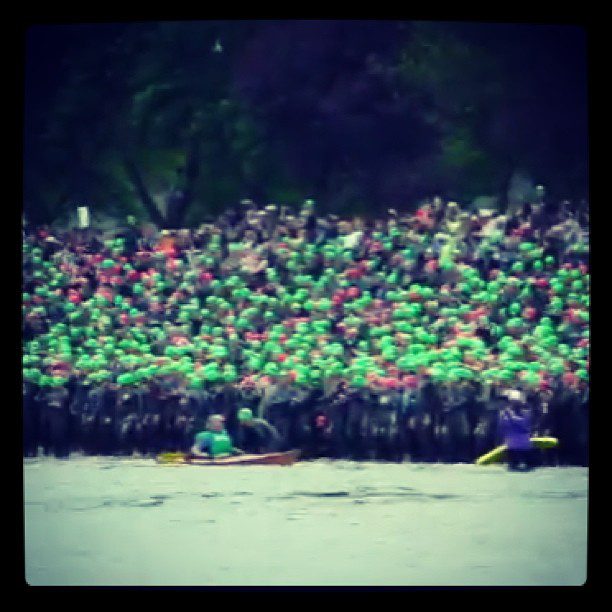
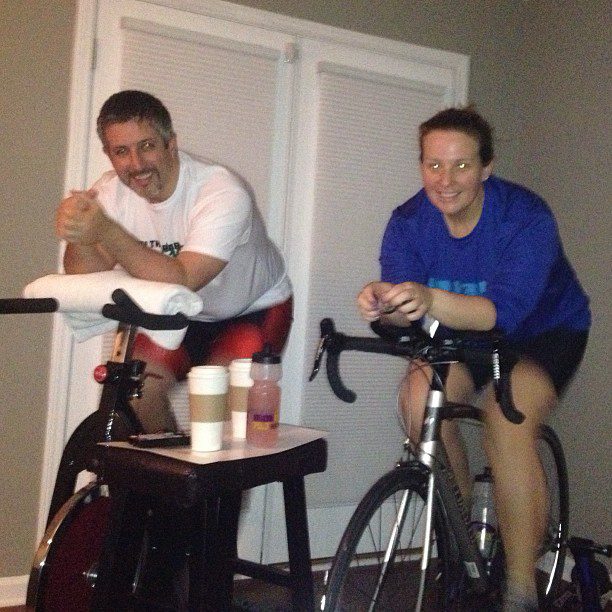


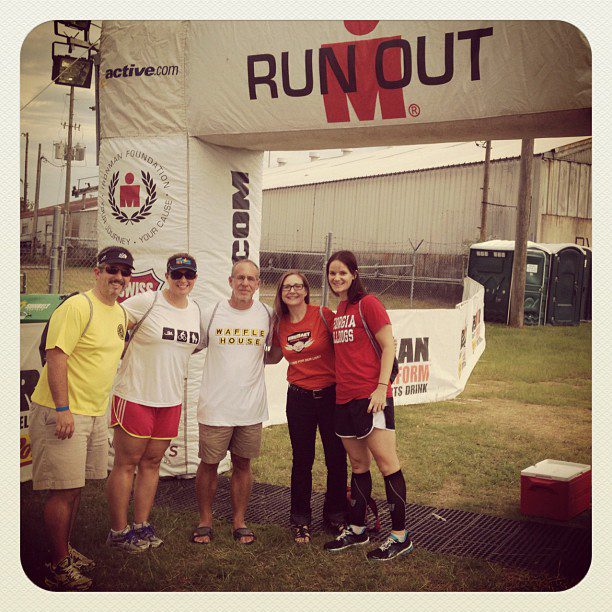

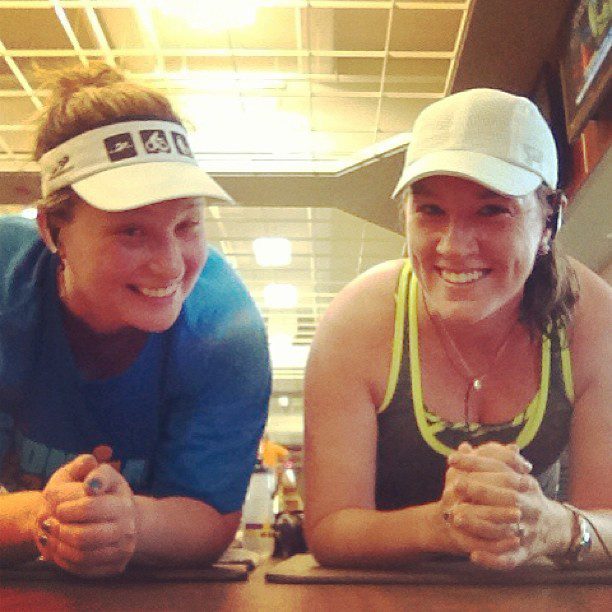
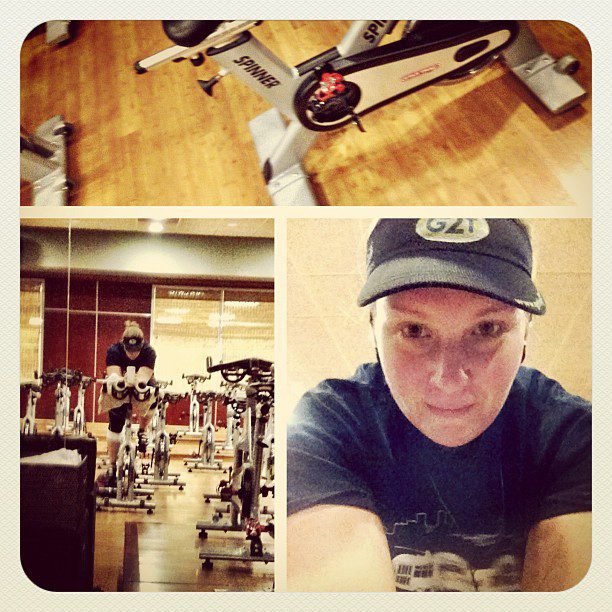
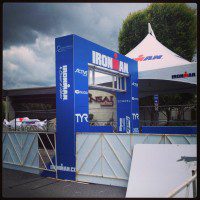
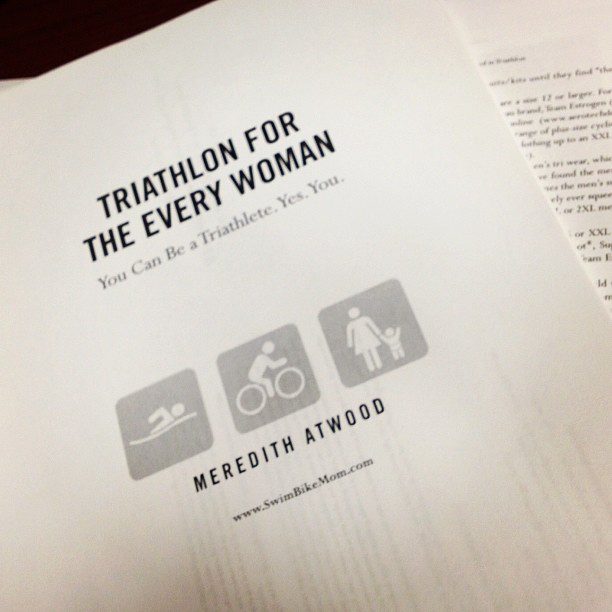
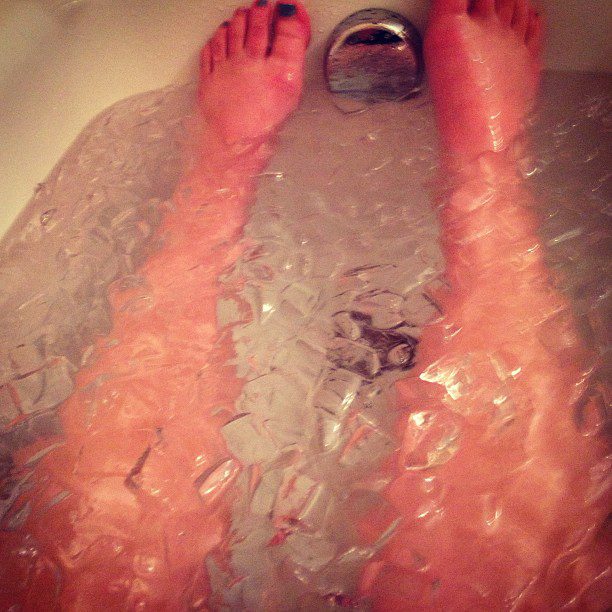
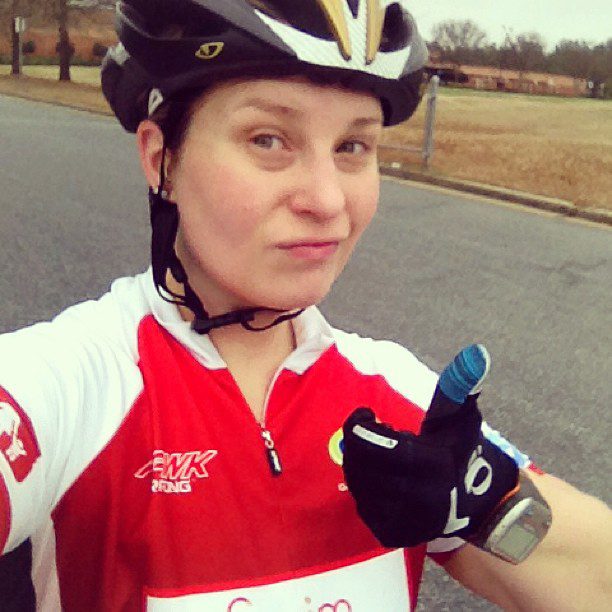

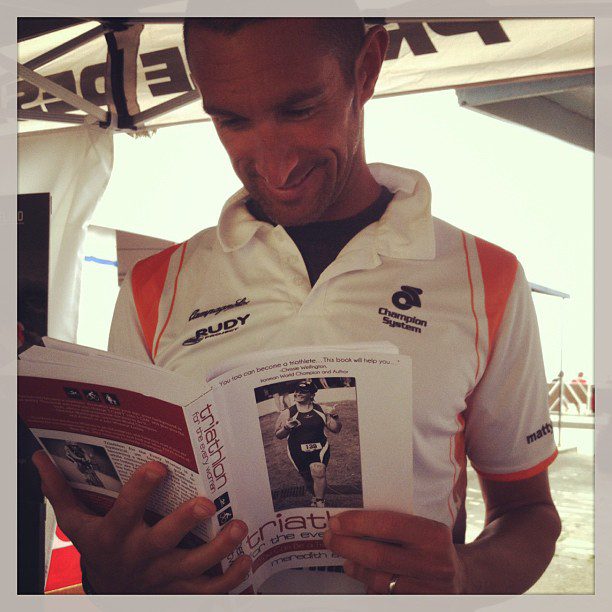
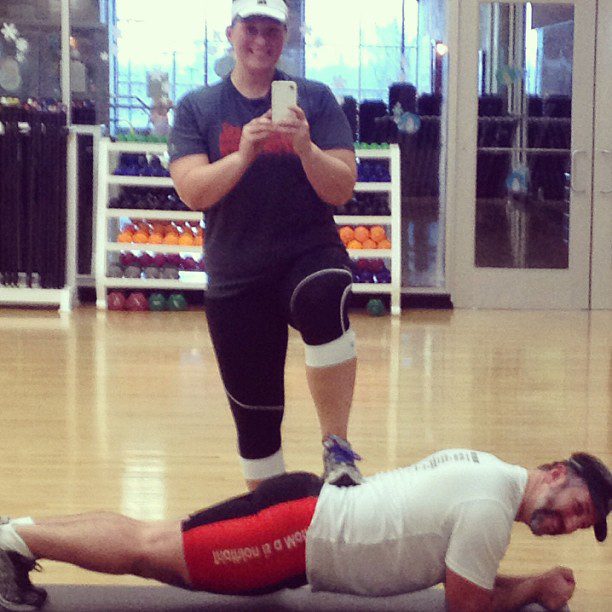
Great list! I’m only surprised that you list a Sprint swim as only 400-500 yards, because the ones I’ve done have been 750 meters (820 yards).
As noted, it’s “approximate” distances. I have been in some with 500-800 meters as well.
I thought everyone called the Big Gear the “Granny Gear”! Or is that only on bikes with three rings? We have a big hill here and we all talk about “going Granny on it”.
PERFECT TIMING!! I am still pretty new to Triathlons, so this was a much need crash course in the lingo! Hopefully I won’t sound like a total newb after this haha